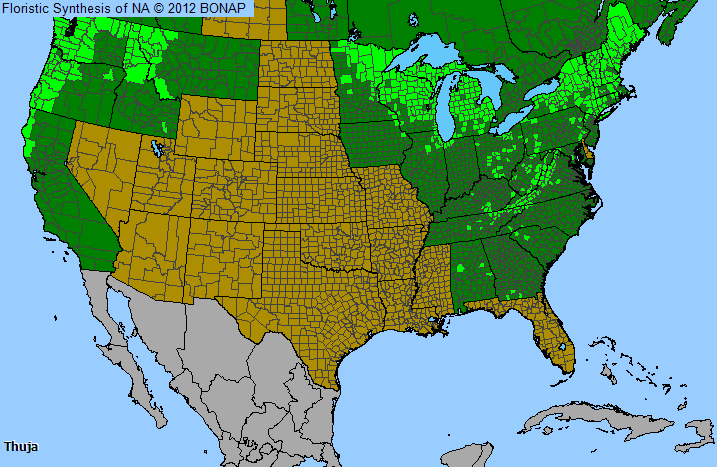
Plant Allergy Overview
Allergenicity
Moderate
Pollen Season
Spring
Type
Tree
Sub-Type
Evergreen
Allergy Information
People allergic to cypress or juniper may also have sensitivity to Arborvitae.
Genus Details
Arborvitae or northern white-cedar is a common evergreen native to northern states in wet and neutral or alkaline soils. This popular shrub is sold as globe or pyramidal shapes. Trees have a conical crown of short, spreading branches and grow 40-50 feet in height and 2-3 feet in diameter. Branches have small, yellow-green, scale-like leaves with small, light brown, upright cones and male and female flowers on different branches. Another species within this genus, western red cedar, has similar foliage and cones and is the only native Thuja species in western U.S. This Thuja grows in moist soils and reaches a height of 150-200 feet and 3 to 8 feet in diameter. Dense crowns are formed with branches that turn up at the ends. All species release large amounts of pollen over an extended period of time in March-April. Pollen release occurs in May-June in coastal Alaska and interior locations for western red cedar. Thuja is probably the first North American tree introduced into Europe and tea made from the foliage was used to treat scurvy.
Pollen Description
Grains are usually spheroidal with a thin exine. The grains are 1-aperturate with a faint circular pore. The pollen grains are uniform within the family and different genera are difficult to distinguish.
Grains are 25-36 micrometers in diameter.
Genus Distribution

The shaded areas on the map indicates where the genus has been observed in the United States.
 - Native, observed in a county
- Native, observed in a county  - Introduced, observed in a county
- Introduced, observed in a county  - Rarely observed
- Rarely observedSpecies in Arborvitae Genus
Allergens & Plants Search
Enter a full or partial species name to find more information on one of over 1,200 potentially allergenic plants.
For example, you can find chenopods searching on "cheno"


